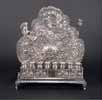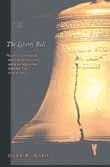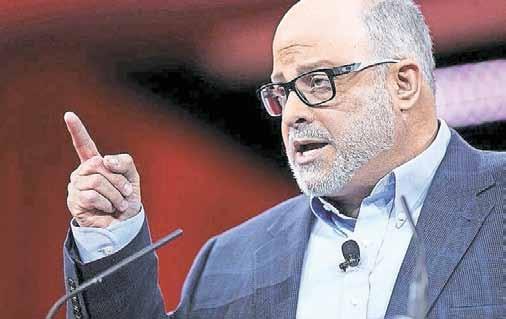
Local





Local



By Mike Wagenheim, JNS
An estimated 40,000 people, including members of Congress and the Knesset, Israeli ministers, local public officials and former hostages and their families, lined Manhattan’s Fifth Avenue on Sunday as part of the 77th annual Celebrate Israel Day parade.
The event took place amid uncertainty in Israel but also, organizers said, as a chance to unify around the event’s theme of hatikvah, hope, and display Jewish pride.
Students from scores of schools in the metropolitan area were a vigorous presence in the line of march.
“There is a lot to hope for this year. There are still 58 hostages in Gaza,” said Eric Goldstein, the CEO of the UJA-Federation of New York, which co-organized the event. “We hope that at the next parade, and sooner, they are all back home.”
Goldstein, who was celebrating a new grandson born in Israel that morning, said that Jews also hope for “a country that is more prosperous and peaceful and that grows and thrives as a Jewish democratic homeland.”
Danny Danon, Israeli ambassador to the UN, told JNS at the parade that he met with relatives of hostages on Friday. “They came to march with us here today,” Danon said. “I told them, ‘It will happen, but it will be sooner than later’,”
Danon said that he met with Steve Witkoff, the US special envoy for the Middle East, before the latter’s trip to Gulf countries last week. Witkoff has been leading efforts to free the hostages, including Edan Alexander, a dual US and Israeli citizen, who was released last week.
Danon said that “the pressure that we apply today on Hamas” through heavier military operations “can allow something to happen very soon.”
Despite political attacks on the Jewish state, Israel has strong global backing, as evidenced by Yuval Raphael, an Israeli singer and Oct. 7 survivor, coming in second in the Eurovision competition last week, according to Danon.
“It showed that the world is not against us. Maybe some of the heads of government, some of the politicians, they want to advocate against Israel, but the entire world is not against us,” Danon said.

Mark Treyger, CEO of the Jewish Community Relations Council of NY, which co-organized the event, told JNS, “We’re not giving up, ever, because resiliency and strength is in our DNA.”
“We are marching for the love and pride that we have in Israel, in our Jewish identity and who we are — that we live in the greatest city, the greatest country in the world, and our solidarity with Israel, which is so central to our Jewish identity,” Treyger said. “We’re marching forward. We’re never going back.”
Under a heavy police presence, parade goers lined Fifth Avenue from East 62nd to East 74th streets, cheering on floats and marchers from dozens of local and national Jewish organizations, synagogues and schools.
Several incidents of anti-Israel harassment were recorded on surrounding streets leading into and out of the parade, but no protests erupted along the route.
Several hostages freed from captivity in Gaza were in attendance, including Israeli-



American Keith Siegel.
“People have been sharing their joy that I’ve been released, and it’s very, very moving,” Siegel told JNS. “I appreciate the support from the Trump administration and all of the efforts that they have been doing, all of the achievements that they have accomplished. It’s very, very warming to know that many, many people want the hostages back the same that I do.”
Gov. Kathy Hochul, Mayor Eric Adams and former governor and mayoral candidate Andrew Cuomo participated in the march, as did other electeds.
Senate Majority Leader Chuck Schumer drew some light boos from the audience and departed shortly after speaking. Many of the politicians in attendance declined to talk to reporters and appeared to keep their public remarks apolitical.
Treyger said that “this parade is bigger than any government, bigger than any individual.”
“This is about the Jewish people in a moment of crisis that we will overcome, because we’ve
been here before,” he said. “We come here from many different backgrounds, speak many different languages, but when we march on Fifth Avenue, we’re marching as one, one people, one heart, one community, marching forward together. That’s what today is about.”
Freed hostage Eliya Cohen reunited at the parade with Dr. Noa Eliakim-Raz, head of Beilinson Hospital’s departments of internal medicine and of returning hostages and the physician who treated him upon his liberation from Gaza.
“I was deeply moved to meet Eliya, the hero, marching for the return of the 58 hostages still held in captivity in Gaza,” Eliakim-Raz said publicly. “The rehabilitation of the returnees, and of all of us as a people, will not be complete without the return of them all, until the last hostage.”
The Tzabar leadership of Tzofim North America, the branch of the Israeli scout movement, helped open the parade with about 350 campers from area “tribes,” as well as Elinor Bitton Bariach, head of the Shaked tribe from Kfar Aza.

















and although we were a small group, our voices were loud.
Marching in the Israel Day Parade with 40,000 other Jewish people from all across Long Island, the five boroughs and beyond felt like a dream.
I had the incredible opportunity to march with my temple, East Meadow Beth-El Jewish Center, on May 18. There were 17 of us total,
No matter how religious and observant you are, the Jewish people came together for their love of
What started out as a simple bus ride to New York City turned into a traffic-jam debacle in which were we rerouted away from the Long Island representation lining up off 5th Avenue. When we finally joined our Long Island cluster, we busted out the new banner and waved our Israeli flags high!
We started walking up Fifth Avenue from 52nd street, but the parade officially started on 57th Street and ended 18 blocks uptown.
While marching in-between other Nassau County synagogues, I was reminded that no matter how you end up there the wait is always worth it.
Ispent some time holding the banner and smiling from ear to ear knowing that I was not only representing my temple, but Jewish people all over.
Seeing and hearing the spectators cheer for us and commend our efforts made the hectic experience simmer away. No matter how religious and observant you are, the Jewish people came together for their love of Israel.
It was truly the most beautiful day for a pa-

rade through New York City. It was 70 degrees and sunny with little boughs of wind here and there. You couldn’t have asked for a better day.
This parade was filled with people of all ages and levels of observance. We were lucky enough to be behind one of the floats that had live entertainment on it. It felt like a dance party through the streets of Manhattan.
This was my second time marching, but the last time was over 10 years ago. Safe to say, I will definitely be back to represent my people and show how proud I am to be Jewish even during these tough times.
When the parade was over, our group trekked to 80th and Park Avenue to meet up with our bus driver and sit through traffic to return home.
It was an incredible experience being with other like-minded people and sharing our love for Israel and being Jewish. Am Yisrael Chai! Melissa Berman covers the Five Towns for the Nassau Herald. Her synagogue, East Meadow Beth-El Jewish Center, was formed in 2020 through the consolidation of the East Meadow Jewish Center (founded in 1953) with Temple Beth-El (founded in 1956). Write: Columnist@TheJewishStar.com



Academic
World-Renowned
Jewish
Central

By EJ Kessler for The Jewish Star
Don’t count Jews out of the Ivy League — despite the virulent hatred of Israel and Jews exhibited by many leftist professors and administrators at those schools since Hamas’s October 7, 2023, attack on Israel. Nor should the Trump administration force the Ivies to reform by withholding billions in federal contracts — which will backfire and set a bad precedent of government meddling in private institutions.
That was the upshot of an all-day symposium held Sunday at the Center for Jewish History, which brought together professors, rabbis, independent scholars and journalists to address this question: “The End of an Era? Jews and Elite Universities.”
“I certainly don’t think that we should abandon great citadels of learning or be chased out of them, although to be there takes fortitude that I don’t think should be asked of every student,” said Maimonides Fund Scholar in Residence Rabbi David Wolpe in the opening address.
Wolpe said that “it was a dream” of earlier generations that Jews be admitted to schools such as Harvard, Stanford, Yale, Princeton, and Columbia, and that Jews had invested not only money but their souls in those institutions.
Jews should stay and battle for the minds of the leaders being cultivated there, and for liberal democracy more generally, Wolpe and other speakers agreed. That included the day’s most controversial panelist, financier and Harvard alumnus Bill Ackman, a Trump ally, whose




presence among the speakers generated a protest from some Center for Jewish History affiliates.
Ackman defended Trump’s sallies as reasonable attempts at reforming inefficient and biased universities, and said that Harvard’s administration should negotiate with him.
Not so, said Emory University’s Deborah Lipstadt, President Joe Biden’s former antisemitism envoy.
“What we’re seeing now is an attack on elite universities in the name of antisemitism, which does exist on the campuses,” she said. “But what scares me is if the universities that are fighting back win, they will say we won despite the suggestion that we were antisemitic — or despite the Jews — and if they lose they will say we lost because of the Jews. … Either way, the Jews lose.”
Several panelists said that the expressions of antisemitism that erupted at elite campuses during the latest Mideast war should not have surprised.
In the 1920s, the Ivy League invented modern admissions practices in order to limit the burgeoning number of Jewish students who were entering on the merits of high test scores, according to Columbia historian Rebecca Kobrin. They did so in order to safeguard their status as bastions of a Protestant elite, an effort that continues today in quotas against Asians.
For decades, starting in the 1960s but continuing until today, pro-communist and pro-Islamist scholars such as Edward Said influenced generations of their left-

ist colleagues in the humanities to question the moral and political legitimacy of Israel. Some fields, such as sociology and modern languages, have become almost entirely hostile to Jews and Israelis.
“A young scholar trying to get a job teaching Middle East studies who had the views of those of us who think Israel has the right to exist would find it very difficult,” said historian Jeffrey Herf.
Nowadays, the administrative regime of Diversity, Equity, and In-





clusion — which seeks to guarantee equal outcomes, and posits a world of “oppressors” and “oppressed” — puts Jews “outside the orbit of empathy,” in Wolpe’s words.
Even so, the proceedings threw into sharp relief how enmeshed Jews have become in academia.
According to psychologist Stephen Pinker of Harvard, 40% of Harvard’s faculty is Jewish, as is 40% of its Nobel laureates. That has occurred even as universities across America have become more international in
their student bodies.
“It ought to be obvious that Trump’s efforts are going to bring about the exact opposite of what his admirers think is going to come about,” said critic Paul Berman. “There’s no example in modern history of a large train of thought stamped out by a government or executive action.”
The only answer to pernicious thinking, he said, “is through a battle of ideas and writers and thinkers, through argument.”
Others, such as Pinker, said that universities need to articulate a clear set of principles and rules — and to stick to them.
Not to mention, hire a strong leadership. A few speakers cited the timorous leaders who have churned through the presidencies of Harvard and Columbia.
“In order to be a leader, you have to be disagreeable,” Wolpe said, citing what he said was a lack of humility, a failure of courage, and a lack of empathy among Harvard’s leaders.
Columbia journalism professor Nicholas Lemann said the fact that Columbia had had four presidents in the last 22 months had contributed to the fraught atmosphere on campus.
A member of Columbia’s task force on anti-Semitism, Lemann said that he had lost friends because of his participation in the task force but that it would be issuing frank recommendations soon.
As anti-Israel demonstrations have picked up this spring, those nostrums can’t come soon enough for Ivy league students.



• Obstetrics & Gynecology
• Maternal-Fetal Medicine
• Gynecology-Oncology
• Breast Surgery
• Urogynecology
• 3-D Digital Mammography
• Diagnostic Ultrasounds
• Breast Biopsy Procedures
• Bone Density Testing
• Nutrition Services


As the European Union finalizes a new AI code of practice, set to be released in weeks, governments across Europe are waking up to the urgency of regulation.
•Globally, we are seeing humanoid AI robots rolled out on Chinese production lines.
•US politics is embroiled in AI issues
•The UK Parliament is deep in debate regarding AI’s use of copyrighted material, particularly by big tech firms.
As AI is reshaping our lives, we may be sleepwalking into an algorithmic future we barely understand. Is there a Jewish perspective on this?
Some contemporary Jewish scholars have noted the danger of losing the power to write, of inner effort and self-expression.
The Bible opens by describing that Man was created in the Divine image, and for some Jewish scholars, from the Middle Ages onwards, that Divine image means the ability to choose, to have agency and power. AI is robbing us of that. It has removed our ability to act as free agents, making decisions.
Studying sacred texts and Jewish law is an activity that takes pride of place in Judaism. The Divine image we humans are gifted with is our intellect — the power to compute, contemplate and soar with our brains to ever higher abstract worlds of transcendent thinking.
AI, it has been argued, is an assault on all this, harming both interpretations of our Divine image, no less. AI has taken away our power to choose and think, to weigh up issues ourselves, and to consider concepts and ideas. Instead, we simply type a prompt about anything we need to know and out pumps a long, already worked-
out answer to our most vexing moral or intellectual quandaries.
This concern, of course, spills over into deciding on intricate matters of Jewish law. What comes of Jewish law with AI?
Jews have always been legalistic, rigorous and detailed, prized as the “People of the Book.” As the late historian Paul Johnson noted, the “ritual spirit” of Judaism and its “punctilious observance” in embracing laws governing all areas of life have always been its “strength.”
Can ChatGPT and its relatives rule on matters of Jewish law or deem a marriage void, a food kosher or unkosher, or instruct on how best to perform a commandment? Where is the place for robots in religious decision-making?

Is ChatGPT to be equated with the famed, legendary creature of the Golem? Or is it altogether different?
These questions are unanswered as yet. However, I am sure most rabbis would agree that Jewish law is to be debated and expanded exclusively by human minds and hearts.
Torah wisdom, as the Talmud famously declares, is “not in the heavens.” Instead, each person is enjoined to “toil in his tent,” to study and conquer the material. Ruling on ambiguous areas of Jewish law, on cases that require argumentation and nuance, I believe, must always remain in the purview of human beings.
However, as a tool for work and for helping people gain a livelihood, AI can certainly be positive. As the outstanding Orthodox theologian and Talmudist of 19th-century America, Rabbi Joseph B. Soloveitchik, argued in his lectures, technological and economic revolution is even a religious task of conquering the natural world and improving human civilization.
Again, this was one of the first tasks entrusted
to primordial man in the Bible: to cultivate the earth and control it. AI certainly fulfils that mark, now being rolled out in health-care systems, manufacturing, security and more.
While it is still a fraught issue, industries will adapt. From self-driving cars to automated accountancy services, AI will certainly shake up jobs, entire markets and products in an uncertain and wholesale way. Yet arguably, as time progresses, people’s work will eventually adjust so that AI will be a tool that will help improve people’s work.
The sages praised a person who works for his or her bread. Labor, insofar as it grants human independence, continuity and a flourishing society, is a force for the good. Yet that does not mean we should not be efficient, improving the way we work. Our daily prayers are full of requests for a healthy, positive life, as well as for bountiful blessings of rainfall and produce. In our less agrarian economy of today, is not the equivalent of that helpful technologies?
In his research, Rabbi Professor Jacob J. Schachter found that Jews benefited greatly and were part of the print revolution; the digital rev-
olution and artificial intelligence should be the same. As he writes, “History would suggest that rather than resist steel because it can be beaten into swords, we do better to embrace it and make ploughshares instead.”
All of that notwithstanding, the great dangers screens can have on the minds of children, just forming neurologically, obviously need to be given great thought. I am in favor of banning smartphones in schools, as governments are increasingly recognizing, and as Orthodox Jewish communities the world over have always understood. Professor Jonathan Haidt, for decades, has advocated this. But still, humankind does not need to be afraid. But we should maintain our agency, decision-making and brains.
As the Lithuanian rabbis of previous generations were wont to remark: “The Torah’s first mitzvah is to think!” Torah study and Jewish legal decisions should remain in our hands and heads.
Yet as the Chassidic masters used to urge, have faith and trust; the course of world development is for the good. AI can be of great benefit to us — in our work, in developing our economies and for society as a whole.
To return to Paul Johnson, he finishes his magisterial work on Jewish history with the accolade that the Jews spent millennia “writing their role” in this world, tenaciously believing humanity to have agency and life to have purpose.
Let’s not sleepwalk with the crutches of AI, but walk stridently with it, using it where we should yet keeping our Divine image intact all the same.
Rabbi Pinchas Goldschmidt is president of the Conference of European Rabbis and exiled chief rabbi of Moscow.
Write: Columnist@TheJewishStar.com






By Melissa Berman, LI Herald
LI Herald photos by Alice Moreno
Last Thursday evening, Cedarhurst’s Andrew J. Parise Park was filled with joyful noise as the site celebrated its 30th annual Lag B’Omer event.
“Lag B’Omer is truly a day when everyone celebrates to the extent that Jewish law dictates,” said Rabbi Zalman Wolowik of Chabad of the Five Towns, which organized the festivities.

“Even if someone is mourning a loved one on this day, we celebrate because we’re all breaking our mourning.”
The celebration featured bows and arrows, a tug of war, kites and Frisbees, bubbles and barbecue, along its anticipated highlight: a giant bonfire that people danced around.
“It’s just so beautiful and meaningful to have all walks of the community joining,” said Rebbetzen Chanie Wolowik.
“We do it so the community comes out and feels proud to celebrate the holiday together.”
Top left: Yigal Rosengarten uses all his focus to shoot a bow and arrow, a traditional activity for celebrating the holiday.
At right: Jay Staple pets the chicken at the petting zoo as he holds his grandson Eli Staple, 10 months, at Andrew J. Parise Park.

At The Jewish Star, selling advertising for the newspaper is just part of the job.
Our staff’s toolkit includes an exceptionally broad range of useful products (including both religious and secular publications and websites; digital, email, radio and social media marketing; in-person events; direct mail; commercial printing, and more) — whatever it takes to build business and raise revenue for our commercial and non-profit partners.
Employees are trained by the best in the business, in a supportive, collegial and kosher environment.
These F/T positions (P/T schedules may be arranged) offer competitive compensation ($40k-$90k) with excellent commission and bonus opportunities, paid holidays (including Jewish holidays), time off, medical and 401(k).

At Mount Sinai South Nassau, we honor the power of nurses and recognize the invaluable contributions they make to our hospital, its patients, and the communities we serve.
Mount Sinai South Nassau nurses have earned Magnet® Recognition, a national quality standard that few hospitals obtain, three consecutive times since 2014. A Magnet designation highlights the nurses and hospital’s commitment to patient care and is an indicator of better outcomes for patients. As we celebrate Nurse’s Week, we recognize the Mount Sinai South Nassau nurses who achieved this high standard of care.
www.mountsinai.org/southnassau

love the story of Shavuot. As a child, I think it was the drama, the fire and thunder that attracted me, and the heroism and sad ending for Moses, who ultimately was denied entry to the Promised Land. At 9, I was a sucker for sad endings.
The story has all the drama of a huge blockbuster movie; De Mille picked up on that and so did Disney. But the back story, the negotiations, the trips up the mountain, were also interesting.
After other people refused the laws, G-d offered them to Moses who brought them to the Jews who accepted immediately, famously saying, Na’aseh v’nishma, “We will do and then we will listen” They didn’t read the terms of service before signing on the line both for themselves and their descendants.
Shavuot is a holiday filled with questions, contradictions in texts and a whole lot of miraculous wonders. We pray and study and eat lots of creamy and sweet foods.
Enjoy this joyous holiday — and don’t forget the cheesecake!
• 7 Tbsp. butter
• 1 Tbsp. extra virgin olive oil
• 3 large onions, cut in half and thinly sliced
• 2 lb. zucchini, yellow and green cut in 1/4 to inch thick slices
• 2 Tbsp. unbleached flour
• 1 cup whole milk or half and half
• 1 clove finely minced garlic
• 1/4 tsp. paprika
• 3/4 cup shredded Gruyere cheese
• 1/4 cup shredded Parmesan cheese
• 3/4-1 cup breadcrumbs
• Salt and freshly ground black pepper
Preheat the oven to 400 degrees. Place half the butter and the olive oil in a large, deep skillet. (12 to 14 inches) Cook the onions until lightly golden. Add the zucchini, cover, and cook until just fork-tender.


Meanwhile, heat the milk in small saucepan. Place the flour in a small bowl, add a few teaspoons of the milk and mix until smooth. Add to the milk and whisk until thickened. Add the minced garlic, paprika, salt and pepper and cook until thickened and the consistency of heavy cream. Pour the milk over the zucchini mixture and stir gently.
Melt the remaining butter in a small microwave-safe bowl and pour into an 8X10 or 9X13 baking dish. Pour the zucchini mixture into the baking dish and add the cheeses. Mix the cheeses into the veggies. Top with breadcrumbs and bake until bubbly and golden, about 20 minutes. Serves 6 to 8.
VARIATIONS: Add some sliced sun-dried tomatoes or roasted halved cherry tomatoes. Add some roasted red peppers, or cooked broccoli. This is a recipe that cries for your own touches, so be creative and add what your family loves.
My family loves this with homemade challah croutons which are softer than commercial croutons.
• 1-1/2 oz. package dried porcini mushrooms
• 3 Tbsp. olive oil, divided
• 1/2 to 1 cup onions, diced
• 2 to 3 shallots, finely diced
• 1 quart vegetable broth or water
• 12 oz. assorted wild mushrooms, divided half chopped, half sliced
• 10 oz. white mushrooms, thinly sliced
• 4 oz. baby bella mushrooms, very thinly sliced
• 3 garlic cloves, minced
• 1 tsp. chopped fresh thyme, more to taste
• 2 Tbsp. minced fresh chives
• 4 Tbsp. butter or pareve, trans-fat-free margarine
• 1-1/2 Tbsp. unbleached flour
• 1-1/2 cups whole milk, (soy, almond, rice or whole) or half and half or mix
• 1/2 cup heavy cream, or half and half
• Salt and freshly ground black pepper to taste
• Sour Cream for garnish (if dairy)
• Additional snipped fresh chives for garnish
• Optional: 4 to 6 Tbsp. white wine or sherry
Place the porcini mushrooms in a 1 cup measuring cup. Add boiling water to the top. Cover with foil and set aside for 30 minutes. Remove the mushrooms with a slotted spoon and reserve the liquid. Coarsely chop porcini mushrooms. Heat a large skillet and add half the olive

oil. Add the onions and shallots and sauté until golden and very soft, 10 to 15 minutes. Stir often. Remove the onions to a soup pot. Add the broth to the soup pot and bring to a boil then reduce heat to a low simmer.
At this point, you can use an immersion blender to make a smooth soup base. Add the rest of the oil to the pan and add all the mushrooms. Sauté until the mushrooms begin to turn golden and have reabsorbed all their juices, 9 to 15 minutes.
Add the minced garlic, and the chives and sauté for 2 minutes. Add the mushrooms to the soup pot. Let simmer.
Place the butter in a small saucepan. Heat until melted and bubbly. Add the flour and whisk until smooth. Continue whisking until the mixture browns just a bit and smells slightly nutty. Slowly add the milk to the mixture and continue to whisk until smooth and thickened. Let simmer. Add some of the porcini soaking liquid (avoid the grit at the bottom of the cup). Whisk until smooth.
Add the milk and, if using, sherry, and mix well to blend. Simmer for 15 minutes. Season with sour cream and more snipped chives or some more sautéed sliced mushrooms. Serves 4 to 8.
This is the new go-to cheesecake. Crustless and slightly bitter from the darkened top. It is delicious on its own or with a drizzle of homemade caramel sauce.
• Unsalted butter very soft(for pan)
• 2 lb. cream cheese, room temperature
• 1-2/3 cups sugar
• 6 large eggs
• 2 cups heavy cream
• 3/4 tsp. Diamond Crystal or 1/3 tsp. Morton kosher salt
• 2 tsp. vanilla extract
• 1/3 cup (unbleached flour)
Preheat the oven to 400 degrees. Brush a 10-inch spring form pan with unsalted butter, See Joni on page 14



































































then line with 2 crossed 12X16 sheets of parchment paper, creased to fit. The parchment should come about 2-inches above the top of the pan all around the rim. It is OK if it is wrinkled, Place the pan on a rimmed baking sheet and set aside. Place the softened cream cheese and the sugar in the bowl of an electric mixer and beat until smooth and creamy. Scrape the bowl as needed. Add the eggs one at a time, beating until smooth after each addition.
Turn the mixer to very low and slowly add the heavy cream in a thin stream. Scrape the bowl frequently. Add the salt and vanilla and beat another 30 seconds until smooth and completely blended.
Turn off the mixer and gently sift the flour over the cream cheese mixture. Turn the mixer to very low and beat until the flour is smoothly incorporated and the batter is silky smooth, about 30 seconds. Scrape the bowl often, making sure to get to the bottom of the bowl. Beat another 10 to 15 seconds on very low to break up any bubbles and ensure a smooth cake.
Pour the batter into the prepared pan and smooth the top. Place the pan and rimmed pan into the stove and bake for 60 to 70 minutes. The
cake should be very deep brown on top but still jiggle in the middle. brown on top and still very jiggly in the center. Remove the cake from the oven on the timed pan and let cool about 15 minutes. The cake will fall very noticeably. So not worry – that is supposed to happen. Remove the ring from the cake and continue to cool completely. You can make this a day before and refrigerate. The cake is better served at room temperature, so remove about 3 to 5 hours before serving.
A very simple meringue recipe for the younger members of the house to make and decorate.
• 6 extra large egg whites, at room temperature
• Pinch salt
• 1-2/3 cups sugar
• 1-1/2 tsp. vinegar
• 1-1/2 tsp. pure vanilla extract
• 1/2 tsp. pure almond extract
• 1/8 tsp. cream of tartar
• several kinds of berries and cut-up fruits
• OPTIONAL: Large sugar, oatmeal, or chocolate chip cookies
• OPTIONAL: Food coloring
Preheat the oven to 450 degrees. Place the egg whites in the bowl of the electric mixer.
Beat on high speed until frothy. Add the salt and cream of tartar. When the whites reach soft peak stage, add the sugar, one tablespoon at a time. When the whites are very stiff, add the vanilla, almond, and the vinegar and beat until well to blended.
Draw circles 2 to 3 inches in diameter on a piece of parchment placed on a cookie sheet. Keep circles 2 to 3 inches apart. Turn the paper over and spoon or pipe the meringue onto the circles, heaping each about 3 to 4 inches high. Keep the sides uneven with “ledges” in places.
Reduce oven temperature to 300 degrees. Carefully place the baking sheet in the center of the oven. Bake for 35 to 45 minutes. Turn off the oven and leave in the closed oven for several hours until the oven is completely cool.
NOTE: Add a tiny drop of any food coloring to the meringue.
Assembly: Place each mountain on a cookie and surround with fruit and berries. Let kids place berries on the ledges of their mountain. VARIATIONS: Mix some confectioners’ sugar with lemon juice and a tiny drop of blue food coloring. Let children paint some blue clouds on the mountain.
For a dairy dish, you can place a small scoop of ice cream on the cookie and place the mountain on top of the ice cream. Drizzle with chocolate or caramel syrup. Makes about 10 to 14 mountains.


By Amelie Botbol, JNS
“I wanted to prove that it’s still possible to achieve great things,” said Charlie Taieb, creator of Minyan Everest, an initiative that brings Jewish prayer to the highest peaks on Earth.
“We wanted to show the Israeli people that we haven’t forgotten them — or the 1,200 people murdered on Oct. 7,” he said. “They are in our hearts.”
His passion for mountain climbing began three years ago, when he turned 60, the French Jew told JNS on Thursday.
“In 2022, I decided to climb Mount Kilimanjaro, which is about 6,000 meters [19,341 ft.] high. I had no previous experience in mountain climbing, but I set out with three friends — and we made it to the top.”
That first climb in Tanzania sparked a deeper pursuit.
“Mountain climbing is addictive,” Taieb said. “The following year, I wanted to add a spiritual element to the physical challenge. We traveled to Nepal to climb a 6,200 meter [20,340 ft.] peak — and this time, we brought a Torah scroll.”
With a minyan required for communal prayer, he gathered a group of 10 men and led what he calls the world’s highest minyan.
“We aimed to reach the highest possible altitude to perform our prayer together,” he said.
In 2024, Taieb returned to Nepal with a new group of 10 climbers on a mission to ascend Chulu East, which stands at 6,584 meters (21,601 ft.). This time, the initiative included not only reading from a Torah scroll but also delivering a

humanitarian message calling for the release of hostages held by Hamas in Gaza.
The group received support from French organizations, including Le Collectif du 7 Octobre. Although the climbers’ goal was to reach the summit, they were forced to stop at 6,100 meters (20,000 ft.) after encountering an impassable crevasse.
The latest expedition took place in late April and early May, with 12 climbers attempting to scale Mera Peak in northeastern Nepal. A banner bearing the names of the Oct. 7 victims was created as part of the tribute. Despite the thin air, extreme cold and physical exhaustion, five members of the team reached the summit, 6,476

meters, (21,247 ft.), on May 6.
At the top, they unfurled their banner, opened the Torah scroll, and recited the Kaddish mourning prayer in memory of those murdered by Palestinian terrorists.
As the group ascended, Sherpas advised them to leave behind the 10 kilogram (22 pound) Torah scroll and banners to lighten their load. Taieb and his team explained that the purpose of the journey was to honor the victims of Oct. 7. It was then that the Sherpas informed them that 10 of their fellow Nepalese countrymen had also been killed in the attack.
Upon learning this, the team searched the banner and found the 10 names among the
1,200 victims.
“There was such overwhelming emotion among the Sherpas as they realized that a group of French people had come to their country to pray for Nepalese people they didn’t know but who had been massacred by Hamas,” Taieb said.
Taieb described the climb as a physically and mentally grueling experience, made bearable only by the mission.
“The only thing that kept us going was the promise we made to honor these people and the message we wanted to bring with us to the top,” he said. “It allowed us to go way beyond our physical and mental limits.”
By Mike Wagenheim and Vita Fellig, JNS
New Mayor Eric Adams announced on Monday that he and Nir Barkat, the Israeli economy and industry minister, have agreed to create the New York City-Israel Economic Council, which will “strengthen economic ties and promote innovation between the two governments.”
The new council will “deepen economic ties between our governments and serve as a gateway to the US market for Israeli businesses — forging partnerships with New York City companies, advancing innovation in areas like environmental tech, life sciences and artificial intelligence and helping Israeli startups establish a home in the five boroughs,” Adams stated.
“Today’s announcement of a declaration of intent reflects a proud tradition of New York City mayors collaborating with Israel and will drive innovation, create jobs and strengthen the unbreakable bond between our two governments,” stated the mayor.
The nonbinding declaration of intent “under-
scores a strong mutual commitment and a long history of collaboration between the two governments,” per City Hall.
Moshe Davis, executive director of the new mayoral office to combat Jew-hatred, stated that the new council “represents both strategic partnership and moral clarity.”
“As antisemitism rises globally, New York City is responding with substantive collaboration in key sectors like environmental innovation and artificial intelligence,” he stated. “This council will not only drive opportunity and growth, it will demonstrate that the world’s greatest city stands firmly with Israel and the Jewish people.”
Adams has said he plans to run for reelection in November as an independent. He won’t be on the Democratic primary ballot in June.
Mayor Eric Adams and Israeli Economic Minister Nir Barkat sign a Declaration of Intent establishing the NYC–Israel Economic Council, on May 19.

NYC Mayor

Our North Star has always been keeping New York City streets, subways and communities safe. This is a pro-public safety administration, and we know that in order for New York City to be the best place to raise a family, all New Yorkers must feel safe.
Public safety is essential to our city and way of life, where so many faiths and cultures co-exist. New York City is home to the largest Jewish population outside of Israel, and for nearly 400 years, this community has shaped our city’s culture, food, creativity, and more. But today, our Jewish community is faced with the rising tide of antisemitism and hate.
Since October 7th, 2023, we have seen antisemitic incidents rise exponentially.
Last year, the New York City Police Depart-
ment reported that 54 percent of all hate crimes in New York City were against Jewish New Yorkers, and during the first quarter of 2025, that number rose to 62 percent. In 2024, the Anti-Defamation League also reported a record number of antisemitic incidents across the country, including the highest number in New York state. We cannot — and will not — be silent in the face of these numbers, which demand decisive action and leadership.
Last week, we took action by establishing the Mayor’s Office to Combat Antisemitism — the first office of its kind to be established in a major city in America — dedicated to fighting antisemitism in all forms across our city.
This new office will establish an inter-agency taskforce to coordinate across city agencies, monitor court cases and outcomes at all levels of the justice system, and liaise with the New York City Law Department on appropriate cases to bring or join. The office will also have the authority to ensure city-funded entities do not promote antisemitism. Antisemitism is not only a Jewish issue; it is an issue for all of us. It is an attack on the very idea of New York City, a place where people can
live side-by-side in harmony, regardless of race, religion, or personal beliefs. These are our communities, our friends, our family, and our neighbors who are being vilified.
As mayor, I take antisemitism, as well as all acts of hate, incredibly seriously. Antisemitism has no place in our schools, on our campuses, or in our streets. I’m not a new friend to the Jewish community; we’ve been working and fighting together for a long time, and you have no greater champion than me.
A few years ago, I had the honor of visiting Yad Vashem. I saw the pages filled with the names of the Jews who were brutally murdered during the Holocaust. I saw the pictures of the mothers and fathers, the babies and children, the men and women who were sent to their deaths. I bore witness. It was a moment of deep sorrow and powerful reflection. And it was a moment of renewal to our commitment to not only say “never again,” but live “never again.”
The Mayor’s Office to Combat Antisemitism builds on the work we have done to live up to this promise. Since coming into office, we have directed the NYPD to take action against hate
crimes and violence that threatens New Yorkers. We have established the city’s first “Breaking Bread, Building Bonds” initiative, which brings people together across communities of every faith, class, and creed to share a meal and explore common bonds. And we established the city’s first Jewish Advisory Council to ensure our Jewish brothers and sisters have a seat at the table so their voices can be heard.
As a 22-year veteran of the NYPD, I have seen firsthand what hate can do, and I know how imperative it is that we address it in all its forms across our city.
All our communities must feel at home, feel safe, and feel free to practice their faiths in New York City. No one should ever feel targeted because of who they are or what they believe — no matter the G-d they pray to or the borough they live in. Each of us may not share the same faith, but we share the same fate: We are all New Yorkers, and we must continue to work tirelessly, every day, to protect our city’s residents, their families, and our neighborhoods.
Write: Columnist@TheJewishStar.com
Jewish Star Torah columnists: •Rabbi Avi Billet of Anshei Chesed, Boynton Beach, FL, mohel and Five Towns native •Rabbi Binny Freedman, rosh yeshiva of Orayta, Jerusalem •Dr. Alan A. Mazurek, former ZOA chair, is a retired neurologist, living in Great Neck, Jerusalem and Florida.
Contributing writers: •Rabbi Sir Jonathan Sacks zt”l, former chief rabbi of United Hebrew Congregations of British Commonwealth •Rabbi Dr. Tzvi Hersh Weinreb, OU executive VP emeritus •Rabbi Yossy Goldman, president of the South African Rabbinical Association.
Contact our columnists at: Columnist@TheJewishStar.com
Fri May 23 / 25 Iyar
Behar-Bechukosai • Shabbos Mevarchim
Five Towns Candles: 7:54 • Havdalah: 9:04
Scarsdale: 7:55 • Havdalah: 9:03
Fri May 30 / 3 Sivan
Bamidbar
Five Towns Candles: 7:59 • Havdalah: 9:09
Scarsdale: 8:01 • Havdalah: 9:10
Fri June 6 / 10 Sivan
Naso
Five Towns candles: 8:04 • Havdalah: 9:14
Scarsdale candles: 8:04 • Havdalah: 9:14
Fri June 13 / 17 Sivan
Beha’alascha
Five Towns candles: 8:08 • Havdalah: 9:18
Scarsdale candles: 8:09 • Havdalah: 9:20
Five Towns Candlelighting: From the White Shul, Far Rockaway, NY
Scarsdale Candlelighting: From the Young Israel of Scarsdale, Scarsdale, NY
rabbi Sir JonaThan
SaCkS zt”l

As the saying goes, “There’s nothing surer: the rich get rich and the poor get poorer.” It is to this phenomenon that the social legislation of Parshat Behar is addressed.
Leviticus 25 sets out a number of laws whose aim is to correct the tendency toward radical and ever-increasing inequality that result from the unfettered play of free market economics.
•We have Shemittah — the Sabbatical year — in which debts were released, Hebrew slaves were set free, the land lay fallow and its produce, unharvested, belonged to everyone.
•There was Yovel — the Jubilee year — in which, with some exceptions, ancestral land returned to its original owners.
•There was the command to help the needy (“If any of your fellow Israelites become poor and are unable to support themselves among you, help them as you would a foreigner and stranger, so they can continue to live among you” Lev. 25:35).
•And there was the obligation to treat slaves not slavishly but as “hired workers or temporary residents.” (Lev. 25:40)
As Heinrich Heine pointed out: “Moses did not want to abolish ownership of property; he wished, on the contrary, that everyone should possess something, so that no man might, because of poverty, be a slave with a slavish mind. Liberty was forever the ultimate thought of this great emancipator, and it still breathes and flames in all his laws which concern pauperism.” — Israel Tabak, “Judaic Lore in Heine
Despite the antiquity of these laws, time and again they have inspired those wrestling with issues of liberty, equity and justice.
The verse about the Jubilee Year (“Proclaim Liberty throughout all the land unto all the inhabitants thereof” —Lev. 25:10) is inscribed on the Liberty Bell in Philadelphia. The international movement that began in the late 1990s and involved more than 40 nations, campaigning for cancellation of Third World debt, was called Jubilee 2000 and was directly inspired by our Parsha.
The approach of the Torah to economic policy is unusual. Clearly, we can make no di-
In the ideal society envisaged by the prophets, each person may sit ‘underneath his own vine and fig tree.’
rect inference from laws given more than 3,000 years ago, in an agricultural age and to a society consciously under the sovereignty of G-d, to the circumstances of the twenty-first century with its global economy and international corporations. Between ancient texts and contemporary application comes the whole careful process of tradition and interpretation of Torah shebe’al peh, the Oral Law. Nonetheless, there do seem to be some important parameters.
Work — making a living, earning your daily bread — has dignity. A Tehillim 128:2) states: When you eat of the labor of your hands, you are happy and it shall be well with you.
We say this every Saturday night at the start of the working week. Unlike aristocratic cultures such as that of ancient Greece, Judaism was never dismissive of work or the productive economy. It did not favor the creation of a leisured class.
Torah study without an occupation will in the end fail and lead to sin. Avot 2:2
Unless there are compelling reasons otherwise, one has a right to the fruits of one’s labors. Judaism distrusts large government as an infringement of liberty. That is the core of the prophet Samuel’s warning about monarchy: A king, he says, “will take the best of your fields and vineyards and olive groves and give them to his attendants. ... He will take a tenth of your flocks, and you yourselves will become his slaves” (I Sam. 8).
Judaism is the religion of a people born in slavery and longing for redemption; and the great assault of slavery against human dignity is that it deprives me of the ownership of the wealth I create.
At the heart of the Hebrew Bible is the G-d who seeks the free worship of free human beings, and one of the most powerful defenses of freedom is private property as the basis of economic independence. The ideal society envisaged by the prophets is one in which each person is able to sit “underneath his own vine and fig tree” (Micah 4:4).
The free economy uses the fuel of competition to sustain the fire of invention. Long before Adam Smith, Judaism had accepted the proposition that the greatest advances are often brought about through quite unspiritual drives.
“I saw,” says the author of Ecclesiastes, “that all labor and all achievement spring from man’s envy of his neighbor”. Or as the talmudic sages put it, “Were it not for the evil inclination, no one would build a house, marry a wife, have children, or engage in business.”
The rabbis even favored the free market in their own sphere of Jewish education. An established teacher, they said, could not object to a rival setting up in competition. The reason they gave was, simply: “Jealousy among scholars increases wisdom” (Bava Batra 21a).
The market economy is the best system we know for alleviating poverty through economic growth. In a single recent generation it lifted 100 million Indians and 400 mil-

lion Chinese from poverty.
The sages saw poverty as an assault on human dignity. Poverty is not a blessed or Divinely ordained condition, rather, the rabbis said, “a kind of death” and “worse than 50 plagues.”
They said, “Nothing is harder to bear than poverty, because he who is crushed by poverty is like one to whom all the troubles of the world cling and upon whom all the curses of Deuteronomy have descended. If all other troubles were placed one side and poverty on the other, poverty would outweigh them all.”
However, the market economy is better at producing wealth than at distributing it equitably. The concentration of wealth in a few hands gives disproportionate power to some at the cost of others.
This is not a critique of market economics. As South Korean economist Ha-Joon Chang — who believes it is the best system there is — explained in “23 Things they don’t tell you about Capitalism:” “It needs careful regulation and steering.”
That is what the legislation contained in Behar represents. It tells us that an economic system must exist within a moral framework. It need not aim at economic equality, but it must respect human dignity.
•No one should become permanently imprisoned in the chains of debt.
•No one should be deprived of a stake in the
commonwealth, which in biblical times meant a share in the land.
•No one should be a slave to his or her employer.
•Everyone has the right — one day in seven, one year in seven — to respite from the endless pressures of work.
None of this means dismantling the market economy, but it may involve periodic redistribution.
At the heart of these laws is a profoundly humane vision of society. “No man is an island.” We are responsible for one another and implicated in one another’s fate.
Those who are blessed by G-d with more than they need should share some of that surfeit with those who have less than they need. This, in Judaism, is not a matter of charity but of justice — that is what the word tzedakah means. We need some of this spirit in advanced economies today if we are not to see human misery and social unrest.
No one said it better than Isaiah in the first chapter of the book that bears his name: Seek justice, encourage the oppressed, Defend the cause of the fatherless, Plead the case of the widow. (Is. 1:17) Humanity was not created to serve markets. Markets were made to serve the image of G-d that is humankind.

This week’s Torah portions, the third and final “double parshiot” of sefer Vayikra, is Behar-Bechukotai. Being in the Land of Israel, I’d like to focus on Parshat Behar, which deals with shmita and yoveland the concept of redemption of land known as geulat haaretz. In Behar it says, “The Land shall not be sold in perpetuity for the Land is Mine, for you are sojourners and residents with Me.” Hashem is telling us and the whole world that the Land is His, we merely reside here. And that helps us understand the importance and wisdom of
‘Bullying’
the first Rashi in the Torah (Bereishit 1:1) that explains why the Torah starts with maaseh bereishit (the Creation of the Universe) and not the first mitzvah to the Jewish people (to set the calendar). That Hashem created the entire world and gave this Land, first to some other nations, and then to us, the Jewish people. This is the reason Eretz Yisrael is, as our parsha tells us eretz achuzatchem (Vayikra 25:24) — the land of your (our) ancestral heritage, andachuzat olam, an eternal possession. This is the message the rest of the world must hear: It is ours because Hashem GAVE IT TO US — all of it, from the (Jordan) River to the (Mediterranean) Sea.
The word achuza in various forms appears throughout the Tanach. It means estate or possession coming from the word “achaz,”
Hashem gave us this Land. All of it. It is ours. We’re staying.
to grasp, to hold on to the land, and the land also has a hold on him, an attachment to the owner.
It is used many times in Behar, but it is also used in sefer Bereishit in Parshat Chayeii Sarah when Avraham Avinu wants to purchase the land to bury his beloved Sarah. He asks of the inhabitants to sell him the land — “Tenu li achuzat kever imachem v’ekbera miti mil’phanai (Grant me an estate for a burial site with you, that I may bury my dead from before me.”
Notice that Avraham, who wandered from place to place, when it comes time to bury Sarah he wants an “achuzat kever,” not just a burial plot but an estate, a possession, an inheritance, “l’dor dor,” from generation to generation. That is why all the patriarchs and matriarchs will return and be buried in that achuzat kever in the Meaarat HaMachpela in Hevron.
Later in Parshat Vayechi, Yaacov turns to Yosef and his two sons Ephraim and Menashe and says to them, Hashem promised me earlier (recorded in parshat Vayetze) at Luz-Beit El, which is identified in tradition as Har Hamoriyah: Hashem “said to me … V’natati et haaretz hazot l’zaracha acharecha achuzat olam (And I will give this land to your offspring after you as an eternal possession.”
See Mazurek on page 22

It is an old word, and it describes a behavior that has been around since the beginning of history. Yet the word seems to me to be used more and more frequently these days, and the behavior it describes has gotten out of control.
The word is “bullying,” a behavior that victimizes others and abuses them physically, or more typically, verbally.
The old adage “sticks and stones may break my bones but words will never harm me” is simply not true. Words do inflict pain upon others
and often cause long lasting damage to them. Lately, we have read of more than one suicide which was the result of bullying.
Whenever the media focuses on some supposedly new phenomenon, I am contacted, usually by a reporter, sometimes by a constituent, with the question, “What does Judaism have to say about this?”
During the past few years, as the public has become more concerned about bullying, I have heard that question many times.
The answer is a simple one. Judaism has a lot to say about bullying. One especially relevant source is in the first of this week’s double Torah portion, Behar-Bechukotai. “Do not wrong one another” (Leviticus 25:17). Rashi quotes the Talmud, which states emphatically that this refers to verbal abuse.
The likeliest targets of bullying are the people who are closest to us.
Rashi, following the Midrash, provides two interesting examples of how words can be used to abuse another.
“One should not tease or taunt another person, and one should not give inappropriate advice to others,” he writes. The former is an obvious example of bullying, but the latter is a much more subtle example of the damage that words can cause. Misleading a person by giving him advice which does not fit his personal situation is, in
the eyes of our Sages, a form of bullying as well.
The Mishnah and Talmud in the tractate Bava Metzia give numerous examples of verbal abuse which all provide insights into the definition of bullying that was adopted by our rabbinic Sages. By analyzing these examples, we learn of some of the forms that verbal abuse takes.
“One must not say to a repentant sinner, ‘Remember your former deeds’.” The person who speaks to a repentant sinner this way is guilty of cynicism. He is facing a spiritually motivated individual who sincerely wishes to change. But by confronting him with his past deeds, the penitent becomes discouraged and his idealistic commitment is thereby diminished, if not entirely eliminated.
“One must not say to a sick person that his
See Weinreb on page 22

We’ll call him Gabi (not his real name), a most unlikely recruit. None of us had any idea how and why he had gotten into our unit — he was overweight, to put it mildly, and was always the last to finish every run, the last to get his gun cleaned and ready for inspection, and the last to get out to the parade ground in the morning.
On our masa’o (forced marches) it became obvious that he was in the wrong place, and in a lot of trouble. I could hear his heavy breathing,
groaning and agonizing as he struggled to keep up somewhere behind me, until finally I could not bear it any more. We were heading up a difficult hill, so I told him he could grab on to the straps of my back pouches and I’d try and help pull him.
Very quickly I realized I was in a lot of trouble. It’s not like I had such an easy time myself, and now I was pulling someone else. And then something incredible happened: one of the guys pushed in between us, grabbed Gabi and started pulling him in my stead, and a few minutes later someone else pushed in and repeated the same exercise; all night long through this grueling trek, in what could not have been planned, the entire unit took it upon themselves to give new meaning to the IDF tradition, that “no man gets left behind.”
Simply put, once a few of us made looking out for our buddy a priority, it became everyone’s priority. Although it might have appeared that we were pulling Gabi, in a way, he was also pulling us, and we were really all pulling each other — which, of course, is what being part of a unit is all about.
The first of this week’s double portion, Behar, begins with a fascinating mitzvah: Every seven years in the land of Israel, we are meant to allow the land to lie fallow. We don’t farm, and people have time off from tilling the soil, to nurture their souls.
And after every seventh Sabbatical year, the 50th year is a yovel (jubilee) year, when once again we allow the land to lie fallow. And at the end of this 50th Jubilee year, all lands return to their tribal owners by heritage, and indentured
servants go free. Thus we are reminded that nothing is really ours, and we do not own the land, it is a gift we are given, with which we are meant to serve a higher purpose.
The Torah tells us (Vayikra 25:9) that this moment, when the lands are restored to their original owners and servants go free, occurs at the end of Yom Kippur, when the shofar is sounded throughout the land. Indeed, even today, we blow the shofar at the end of Yom Kippur, recalling this mitzvah.
Why was the shofar blown throughout the land? The Sefer Hachinuch points out that this must have been an extremely difficult thing to do.
The seventh shemitah (i.e., the 49th) year, when the land lay fallow, was followed by the
See Freedman on page 22

The origin of the verse inscribed on the Liberty Bell in Philadelphia is in Behar, one of this week’s parshiot. Its theme speaks to the ideological foundations of our republic, of freedom and political and economic equality for all.
“Proclaim liberty throughout all the land unto all the inhabitants thereof.”
Rabbi Mordechai Kamenetzky, dean at Yeshiva Toras Chaim of South Shore , explained that “truth be told, these words refer not to a
revolution or liberation, they refer to the mitzvah of yovel, jubilee.”
He continues: “Every 50 years, all Jewish servants, whether employed for only a six-year period or on an extended docket, and even those who desire to remain as servants to their masters, are freed. They return home to their families, and their careers of indenture are over.”
This verse was given new meaning in the minds of the planners of the Liberty Bell.

To those devout Christian leaders of prerevolutionary Philadelphia, these sacred words represented for them and their people the hopes
and aspirations for the better life that brought them and their ancestors to these shores from the despotic monarchies of Europe.
We would be well served to take a closer look at this American icon that carries so eloquent a tribute to the Jewish devotion and intense love for freedom.
In his book, “The Liberty Bell,” UCLA Professor George B. Nash describes in great detail the plans, and personalities (led by Isaac Nash) pain that went into the erection of this bell in the mid-18th century. To those devout Quakers who planned this icon, the use of the words to be inscribed upon it represented the fulfillment of a sacred religious obligation.
According to Nash, “These words from the Bible were freighted with social and political meaning. These were words that would take on new layers of significance in different eras, in different contexts, and in different parts of the world. Little did the bell’s commissioners know what lay ahead for this biblical verse.”
Nash speculates at what might have been in these people’s minds.
“What effect did they hope such an inscription would have? The surviving sources do not speak clearly to us about this. But something is known, and much can be surmised. Norris had studied for two years in England and knew Hebrew, Latin, and French; he was also an avid student of the Bible.
“In consulting ancient texts, uppermost in Isaac Norris’ mind was the assurance of Pennsyl-
See Gerber on page 22
Published weekly except during certain religious and civil holidays by The Jewish Star LLC New York City office: 5676 Riverdale Ave Suite 311, Bronx NY 10471 • LI office: 2 Endo Blvd, Garden City NY 11530 Here’s how to reach The Jewish Star — Write: Editor@TheJewishStar.com. Call: 516-622-7461 ext 291
Editor & Publisher: Ed Weintrob
516-622-7461 ext 291
Jewish Star Associate: Nechama Bluth
516-622-7461 ext 241
Content: The Publisher endeavors to ensure that our content is within the bounds of normative halachah and hashkafah. Anyone who feels anything we publish may be inappropriate in this regard is urged to bring the item in question to the attention of the Publisher.
Advertising is accepted at the sole discretion of the Publisher and should conform to standards appropriate for distribution in an Orthodox community.
Send us your news! Editor@TheJewishStar.com
Advertising: Publisher@TheJewishStar.com
Kashrut: The Jewish Star is not responsible for the kashrut of any product or establishment featured in its pages. If you have questions regarding any establishment or product, including its supervision, please consult your rabbi for guidance.
Submissions: All submissions become the property of The Jewish Star and may be edited and used by the Publisher, its licensees and affiliates, in print, on the web and/or in any media that now exists or will exist in the future in any form, including derivative works, throughout the world in perpetuity,
without additional authorization or compensation. The individual or entity submitting material affirms that it holds the copyright or otherwise has the right to authorize its use in accordance with The Jewish Star’s terms for submissions.
Opinions: Views expressed by columnists and other writers do not necessarily reflect the position of the Publisher or of The Jewish Star LLC.
Distribution: The Jewish Star is available free in kosher food establishments, stores, synagogues, and curb-side newsboxes on Long Island, in New York City and elsewhere. To request free delivery to your location, write Publisher@TheJewishStar.com.
Copyright: All content is copyright and may not be republished or otherwise reproduced without written permission by The Jewish Star LLC; to do so without permission is against the law and halacha. For content reproduction write to Publisher@ TheJewishStar.com.
The Jewish Star subscribes to the JNS news service. It, or its contributors, own the copyrights on material attributed to them. The length and content of JNS material and all other submitted material may be edited by The Jewish Star. This newspaper contains words of Torah. While it is not considered shaimos, please dispose of it properly.

When Donald Trump won the presidential election last year, many in Israel thought they’d dodged a bullet. The Democratic Party was viscerally hostile to Israel, while Trump was considered the greatest friend the Jewish state had ever had in the White House.
Now the Israelis are wondering whether they have escaped one nightmare to find themselves in another.
They were blindsided by the Trump administration’s decision to stop attacking the Houthis after the Islamist group promised to end its attacks on shipping in the Red Sea while continuing to fire missiles at Israel.
The Israelis were also cut out of the hostage deal that secured the release of 21-year-old American-Israeli hostage Edan Alexander. Of course, the release of any hostage is a source of profound relief. But many were shocked that the United States dealt with Hamas directly to get its national out, while Hamas ditched a broader hostage deal that was on the verge of being clinched. Moreover, if Qatar could force Hamas to release Alexander, then it could have got the other hostages released, too. That’s because Qatar is Hamas. Yet the Americans have fawned over the Gulf state and praised it to the skies.
In addition, Trump has accepted a luxury Boeing 747 jumbo jet — owned by the tyrant who formerly ruled Qatar and funded Hamas — to serve as the next Air Force One; he is also building a new luxury golf resort near Qatar’s capital, Doha, in partnership with a Qatari company.
It’s hard to see these as anything other than inducements to persuade Trump to advance Qatar’s interests. Doha has other links to the Trump administration, of which the most egregious is that its Middle East envoy, Steve Witkoff, who has gushed over Qatar in cloying terms, is in its debt. In 2023, Qatar’s sovereign wealth fund bought out his faltering investment in New York’s Park Lane Hotel for $623 million.
Not only is Witkoff the beneficiary of the state with which he has been negotiating the release of the hostages, but Qatar represents the Muslim
Israelis are wondering whether they’ve escaped one nightmare to find themselves in another.

Brotherhood, the Islamist organization that is intent upon conquering the West for Islam. It is pursuing this aim by turning not just Witkoff but America and Britain into its hopelessly compromised debtors.
The Free Press has reported that Qatar has spent almost $100 billion to advance its interests in Congress, American colleges and universities, U.S. newsrooms, think tanks and corporations — in other words, to suborn America.
In a similar vein, Syria’s president and former Al-Qaeda and ISIS terrorist, Ahmed al-Sharaa, has dangled the offer of a Trump Tower in Damascus as part of a full-on charm offensive to win over the president.
This week, Trump announced that America was lifting sanctions on Syria and met al-Sharaa, describing him as a “young, attractive, tough guy” with a “very strong” past — a stomach-turning way to describe his bloody and fanatical record.
Yet after announcing the end of sanctions against Syria, Trump remarked: “Oh, what I do for the crown prince!” This was a reference to Mohamed bin Salman, the effective ruler of Saudi Arabia, who, along with Turkey, is al-Sharaa’s firm ally.
Saudi support for al-Sharaa is doubtless to prevent Iran from again using Syria as its puppet. While Iran’s eclipse in Syria is welcome, its replacement by the Islamist Recep Tayyip Erdoğan as the resident strongman is hardly a cause for celebration.
And the idea that al-Sharaa has stopped being a fanatic who believes he has a sacred duty to destroy all infidels and institute an Islamic ca-
liphate, just because he’s trimmed his beard and now wears smart suits, is implausible.
Trump’s negotiations with Iran are also spooking Israel. Although he previously said that if Iran didn’t dismantle its nuclear program in a verifiable way, the United States would destroy it, he’s now saying that the Iran talks are going very well and that the Iranians are being “very intelligent.”
Indeed, they are. While the clock is ticking and they’re racing to build the bomb, they’re dangling Trump at the end of a string to buy time to rebuild the air defenses that Israel destroyed last October. If Trump isn’t careful, he’s going to end up in exactly the same bad place as his leftwing foes, even though they start from opposite positions.
To the post-nation universalists of the left, everyone is governed by reason and self-interest; so all conflicts are amenable to negotiation and compromise. War, say these progressives, solves nothing. What matters is avoiding people being killed.
There’s no doubt that Trump’s genuine commitment to Israel and the Jewish people. But it’s now clear that he has an almost messianic belief that he can end all wars and bring peace to the world through his ability to make deals. He thinks that he can make even the most bloodthirsty tyrants an offer they can’t refuse. He doesn’t care about the justice of a cause. He just wants to stop the killing.
Thus, he has bashed heads together in Pakistan and India to forge an uneasy peace. He believes he can do the same with Russia and Ukraine. And he’s now applying the same principle to the Middle East.
But just as the left — with their belief in some utopian nirvana of the brotherhood of man — have helped empower aggressors such as the Palestinian Arabs and abandoned their Israeli victims, so Trump is in danger of doing the same thing. Like his foes on the left, he doesn’t seem to grasp that any negotiation with a non-negotiable agenda, such as the belief by Iran’s rulers that bringing about the apocalypse will cause the arrival of the Shia messiah on earth, is inescapably an act of surrender.
In his consequential speech in Riyadh, Trump announced a total rupture with the “neo-conservative” aim of remaking the Middle East in the image of American democracy.
“In recent years, far too many American presidents have been afflicted with the notion that it’s our job to look into the souls of foreign leaders and use U.S. policy to dispense justice for their sins,” he said. “I believe it is God’s job to sit in judgment, my job to defend America and to promote the fundamental interest of stability, prosperity and peace.” Well, amen to that. However, the alternative to imposing Western values on the Arab world is not choosing to ignore the attempt by elements of that Arab world to impose Islam on the West. The correct course of action is, as it always has been, to fight and defeat these threats to Western interests.
Trump’s mantra “peace through strength” is fine, but strength inescapably involves the credible threat of war. His Riyadh speech suggested instead that he’s using showers of money to tell those who threaten the West, as well as their putative victims, that all of them are now on their own. America won’t do war. There’s a peacenik of the right in the White House raining down gold instead of missiles.
Trump says he doesn’t have enemies. Where others see threats, he sees only financial opportunities.
The inconvenient truth, however, is that some people are out to destroy America and the West. If Trump doesn’t regard these as enemies, he will leave America and the West defenseless against attack.
It also puts him radically at odds with Israel, which views fighting and winning the war to defeat genocidal Iran as essential for its survival. When Edan Alexander was released, the head of Qatar’s state-run Al Sharq News gloated that America had now been peeled away from Israel by “a move that constitutes implicit recognition of Hamas” and that would “deal a blow to Netanyahu and his Zionist team.”
It’s possible that Trump has a genius strategy that will cause lions to lie down with lambs. It’s possible that he will soon realize that his quest to bring peace on earth is hitting a dead end and that he will accordingly turn on a dime. But it’s also possible that he won’t realize that he’s been played for a sucker until it’s all far too late.
Write: Columnist@TheJewishStar.com
Whatever ‘nakba’ might be, it’s not our problem

Asmattering of Arabic words has entered the English language in recent years, the direct result of more than a century of conflict between the Zionist movement and Arab regimes determined to prevent the Jews from exercising self-determination in their historic homeland.
These words include fedayeen, which refers to the armed Palestinian factions; intifada, which denotes successive violent Palestinian uprisings against Israel; and naksa, which pertains to the defeat sustained by the Arab armies in their failed bid to destroy Israel during the June 1967 war.
At the top of this list, however, is nakba, the word in Arabic for “disaster” or “catastrophe.”
The emergence of the Palestinian refugee question following Israel’s 1948-49 War of Independence is now widely described as “The Nakba,” and the term has become a stick wielded by anti-Zionists to beat Israel and, increasingly, Jews outside.
Last Thursday, a date which the UN General Assembly has named for an annual “Nakba Day,” workers at a cluster of Jewish-owned businesses in the English city of Manchester arrived at the building housing their offices to find that it had been badly vandalized overnight. The front of the building, located in a neighborhood with a significant Jewish community, was splattered with red paint. An external wall displayed the
Their defeat was our liberation. We should rejoice in that fact.
crudely painted words “Happy Nakba Day.”
The culprits were a group called Palestine Action, a pro-Hamas collective of activists whose sole mission is to intimidate the Jewish community in the United Kingdom in much the same way as Sir Oswald Mosley’s British Union of Fascists did back in the 1930s.
Its equivalents in the United States are groups like Within Our Lifetime and Students for Justice in Palestine, who have shown themselves equally enthused when it comes to intimidating Jewish communities by conducting loud, sometimes violent, demonstrations outside synagogues and other communal facilities, all too frequently showering Jews with the kind of abuse that was once the preserve of neo-Nazis.
These thugs, cosplaying with keffiyehs instead of swastika armbands, can reasonably be described as the neo-neo-Nazis.
The overarching point here is that ideological constructs like nakba play a key role in enabling the intimidation they practice.
•It allows them to diminish the historic victimhood of the Jews, born of centuries of stateless disempowerment, with dimwitted formulas equating the nakba with the Nazi Holocaust.
•And it enables them to camouflage hate speech and hate crimes as human-rights advocacy — a key reason why law enforcement, in the United States as well as in Canada, Australia and most of Europe, has been found sorely wanting when it comes to dealing with the surge of antisemitism globally.
Part of the response needs to be legislative. That means clamping down on both sides of the Atlantic on groups that glorify designated terrorist organizations by preventing them from fundraising; policing their access to social media; and restricting their demonstrations to static events in a specific location with a predetermined limit on attendees, rather than a march that anyone can join, along with an outright ban on any such events in the environs of Jewish community buildings.
These are not independent civil society orga-

nizations, as they pretend to be, but rather extensions of terrorist organizations like Hamas and — in the case of Samidoun, another group describing itself as a “solidarity” organization — the Popular Front for the Liberation of Palestine. If we cannot ban them outright, we need to contain them much more effectively.
We can start by framing the issue as a national security challenge and worry less about their “freedom of speech.”
But this is also a fight that takes us into the realm of ideas and arguments. We need to stop thinking about the nakba as a Palestinian narrative of pain deserving of empathy by exposing it for what it is — another tool in the arsenal of groups whose goal is to bring about the elimination of Israel as a Jewish state.
When it was originally introduced in the late 1940s, the word nakba had nothing to do with the plight of the Palestinian refugees or their dubious claim to be the uninterrupted, indigenous inhabitants of a land seized by dispossessing foreign colonists. Popularized by the late Syrian writer Constantine Zureik in a 1948 book titled “The Meaning of Disaster,” the nakba described therein was, as the Israeli scholar Shany Mor has crisply pointed out, simply “the failure of the Arabs to defeat the Jews.”
Zureik was agonized by this defeat, calling it “one of the harshest of the trials and tribulations with which the Arabs have been inflicted throughout their long history.” His story is fundamentally a story of national humiliation and

As a new, allegedly more humane government takes hold in Syria, American policymakers face a familiar temptation: To embrace a fresh face that promises stability and reform after years of chaos and bloodshed. But history warns us against such hopeful naivety. In 1959, the United States welcomed Fidel Castro with more than a small dose of optimism, mistaking revolutionary fervor for democratic potential. That mistake proved costly. Today, as Syria reconfigures its political order, we must not forget the hard lessons of Cuba’s transformation into a Cold War adversary.
When Castro marched triumphantly into Havana, effectively replacing the American-backed dictator Fulgencio Batista, many in Washington viewed him as a charismatic reformer who would restore dignity and justice to the Cuban people. Initially, Castro downplayed his Marxist ideology, assuring the world that his revolution was rooted in nationalism and anti-corruption, not communism. The US extended diplomatic recognition and even offered some economic support.
Don’t legitimize a regime that could turn repressive or anti-American once it’s firmly in power.
Americans were curious. I’m old enough to remember Edward R. Murrow and his TV show Person to Person. Each week, Murrow would interview someone whom he thought his viewers would be interested in learning about. Guests ranged from singers to actors to politicians. In February 1959, the guest was Fidel Castro.
During the interview, which took place with Murrow in New York and Castro in his apartment on the 23rd floor of the Havana Hilton, Castro appeared to be wearing pajamas. He spoke of his mother, whom he hadn’t seen in four years, that he was not a communist, and that he hoped to be in the United States soon.
His son, Fidelito, who attended public school in Queens for a while, was introduced holding a puppy that was given to his father as a present. Hugging his son, Castro came across as a real family man.
Within a year of his accession to power, however, the reality emerged. Castro consolidated power, silenced dissent, “disappeared” opposition, and aligned Cuba with the Soviet Union. Land reforms masked wholesale expropriations. Promises of democratic governance gave way to authoritarian rule. A nation once seen as a neighborly partner became a staging ground for nuclear brinkmanship in the 1962 Cuban Missile Crisis.
The parallels with Syria are not perfect, but they are striking. The civil war has left Syria a fractured and traumatized country. New leadership is arising in the guise of one Ahmed alSharaa. Already, his new regime is presenting itself as a modernizing force, a departure from the brutality of Bashar al-Assad’s rule. But we must remember: Revolutionary governments are not born with democratic values; they often acquire or abandon them in response to incentives and pressure.

We must ask: Who is Sharaa, what does he believe, and who stands behind him?
The 42-year-old has a documented history of affiliations with Islamist extremist groups, including offshoots of both al-Qaeda and, indirectly, ISIS. Known by his nom de guerre Abu Mohammad al-Jolani, Sharaa joined al-Qaeda in Iraq shortly after the 2003 US invasion.
He was captured by American forces and imprisoned at Camp Bucca from 2006 to 2011. Upon release, he returned to Syria and, in 2012, founded Jabhat al-Nusra, the Syrian branch of al-Qaeda, with backing from al-Qaeda’s central command.
In 2013, Sharaa resisted a merger between al-Nusra and the Islamic State of Iraq led by Abu
Bakr al-Baghdadi. This refusal led to open conflict between al-Nusra and what became ISIS. Sharaa pledged allegiance directly to al-Qaeda leader Ayman al-Zawahiri, maintaining al-Nusra’s independence from ISIS.
In 2016, al-Sharaa announced that al-Nusra had severed ties with al-Qaeda and rebranded as Jabhat Fateh al-Sham.
The following year, he led the formation of Hay’at Tahrir al-Sham, a coalition of Islamist factions. HTS established a governance structure in Syria’s Idlib province, providing public services and collecting taxes, much like Hamas did in Gaza and Hezbollah did in Lebanon, but faced criticism for authoritarian practices.
See Flatow on page 22
JonaThan S. Tobin
JnS Editor-in-Chief

As far as groups like Jewish Voice for Peace and the Nexus Project — and their cheering section at the New York Times — are concerned, what the Heritage Foundation is doing is pretty much the end of the world. The Washington think tank has been at the center of a set of “democracy is doomed” conspiracy theories floated by the American left for the last three years.
But the current indictment of Heritage isn’t about Project 2025, their attempt to set forth a general agenda for what ultimately turned out to be the Trump 2.0 administration, in the manner that such institutions on both ends of the political spectrum are always trying to do.
Instead, it is now being demonized for seeking to do something about the unprecedented surge in antisemitism in the United States that has been raging since the Hamas-led Palestinian Arab attacks on southern Israel on Oct. 7, 2023.
Heritage’s Project Esther is an attempt to address a crisis for not just Jews but for the country as a whole, which the Biden-Harris administration and much of the American Jewish establishment largely failed to address, let alone successfully fight.
The Project Esther report was first published in October, weeks before the presidential election. It was the focus of a major effort by the Times’ national investigative reporter, Katie JM Baker, and made clear its bias right in the title of the lengthy article published on May 18 called “The Group Behind Project 2025 Has a Plan to Crush the ProPalestinian Movement,” along with a video that summarized it.
The conceit of the piece is that Heritage’s Project Esther is the script that the administration of President Donald Trump has been following in its efforts to deal with the targeting of Jews on college campuses by pro-Hamas mobs since Oct. 7.
More to the point, the article claims that both Heritage and Trump aren’t interested in antisemitism. Instead, it is alleged that they see the situation in academia as an opportunity to roll out a plan to impose authoritarian tactics that are a blueprint for a scheme to subvert democracy throughout the country.
To make that case, one has to accept the terminology and the premise of those who have been organizing the demonstrations, encampments and building takeovers by students, faculty, administrators and outside agitators chanting for Jewish genocide (“From the river to the sea”) and anti-Jewish terrorism (“Globalize the intifada”) aren’t antisemitic.
According to the Times, the outpouring of support for the mass murder, rape, torture, burnings, kidnapping and wanton destruction on Oct. 7 — and then opposition to Israeli efforts to eradicate the Hamas terrorists and others who committed those atrocities — is merely “pro-Palestinian” activism. The acts of violence and the openly antisemitic objectives, including the destruction of Israel and the genocide of its population, in addition to the language used by this “movement,” are bizarrely rationalized and justified as expressions of idealism and support for human rights.
That is how the Times defines “pro-Palestin-

ian.” And the widespread support for eliminating the one Jewish state on the planet is reported as mere “criticism” of Israel.
According to the newspaper, whose coverage was echoed in far-left outlets like Democracy Now and the Islamist Al Jazeera, the opposition by both Heritage and the administration to the takeover of academia by those who think discrimination against Jews, but not other minority groups like African-Americans or Hispanics, is an outrageous attempt to subvert democracy.
That has a familiar ring to it. Since 2022, the liberal press has been seeking to anathematize the scholars at Heritage. For trying to envision what the next Republican administration could do to roll back the leftist, woke tide threatening to replace the values of Western civilization and the American republic — the substance of Project 2025 — they were falsely accused of hatching a plot to replace American democracy with a new form of Trumpian authoritarianism.
Project 2025 was a major Democratic talking point last year during the presidential campaign, and it obviously scared the Trump campaign enough for him to repeatedly disavow it. Strictly speaking, his denials of complicity in Heritage’s project were entirely truthful. The think tank’s effort was launched at a point in time when it wasn’t clear that Trump would be the GOP’s presidential candidate in 2024.
At that point, many of those who cheered the effort could have easily envisioned some of the proposals outlined in the report being implemented by Florida Gov. Ron DeSantis who, as the Times has noted, has already championed the same efforts to defend Jewish students and oppose woke ideology that is fueling antisemitism in his state.
Trump’s campaign had no input on what Heritage published. But the agenda they were hoping that the next Republican president would act on was entirely in sync with Trump’s understanding of the forces inside and outside the government that had done so much to sabotage and undermine his first term, as well as what needed to be done to thwart the takeover of American education by so-called “progressives.”
Project Esther is no conspiratorial threat to democracy. Instead, it is a much-needed clarion call for ridding colleges and universities of Jew-hatred. It deserves to be cheered by those who care about Jewish safety.
antisemitic invective and goals.
In doing so, Heritage is simply being honest about this network of people and organizations that are devoted to the dismantling of Israel, the denial of Jewish rights and history, and the active targeting of American Jews for intimidation, silencing and even violence, as we’ve seen on hundreds of college campuses in the last 19 months. By seeking to call out these lawbreakers — whose activities would never be tolerated, let alone encouraged by college administrations, were they directed at any other minority group — Heritage and Trump are simply demanding enforcement of the law that forbids the funding of institutions that violate Title VI of the 1964 Civil Rights Act. And they rightly want academic institutions to reject the toxic teachings that help normalize such aberrant conduct and hatred.
Yet for so-called progressives, this is not just the thin edge of the wedge of right-wing Trumpian authoritarianism. In order to discredit Heritage, those supporting this antisemitic surge are seeking to gaslight the country and tell us that the people trying to defend Jews are the real antisemites.
Once he won last year’s election and began a second term determined to roll back the liberaldominated administrative state and the way the woke catechism of diversity, equity and inclusion (DEI) was harming American society and government, it was hardly surprising that he was acting on some of the same imperatives outlined in Project 2025.
As far as education is concerned, Heritage’s Project Esther provides a blueprint for pursuing a plan designed to deny federal funds to schools that violate the law by enabling DEI-related racial discrimination and antisemitism that is fueled by the same toxic leftist myths about critical race theory, intersectionality and settler-colonialism that falsely label Jews and the State of Israel as “white” oppressors of “people of color.”
The surge in Jew-hatred on campus is the direct result of these ideas. So, too, is the way foreign funders and students have helped spread this ideological war on Israel and its Jewish supporters.
What is so interesting about the criticism of Project Esther and Trump’s efforts to fight antisemitism is how its opponents frame the issue as an authoritarian effort to suppress entirely reasonable and even idealistic “critics” of Israel.
That’s the substance of the Times’ article; groups that are directly opposed to calling out antisemites are allowed to pose as representatives of enlightened Jewish opinion. That Jewish Voice for Peace, which has engaged in open antisemitism, including blood libels and opposes Israel’s existence and efforts to defend it, would be quoted in this manner is as grotesque as it is misleading.
The same is true of the newspaper’s use of the Nexus Project, which has deceptively sought to redefine antisemitism in opposition to the widely accepted working definition encouraged by the International Holocaust Remembrance Alliance, so as to make it safe for Jew-haters to call for Israel’s destruction without being labeled as hatemongers.
The point of this argument is to legitimize antiZionism and to try to falsely argue that it is not the same thing as antisemitism.
That’s a talking point regularly voiced by Jewhaters, but it doesn’t stand up to scrutiny. Suffice it to say that if you are willing to deny Jews rights that no one would think to deny to anyone else, such as the right to live in peace and sovereignty in their ancient homeland and to defend themselves, then you are engaging in discrimination against them.
Just as dishonest is the way that the Times deprecates Project Esther’s willingness to refer to a “Hamas support network” and to “Hamas support organizations,” such as Jewish Voice for Peace and Students for Justice in Palestine, another font of
That’s the substance not only of the Times’ slanted news coverage of this issue but also of the writings of some of its left-wing columnists, like Michelle Goldberg. She hasn’t made any secret about her own version of “criticism” of Israel, which involves not just falsely labeling its democratically elected government as authoritarian but invoking opposition to Zionism and its existence as a Jewish state.
In a gob-smacking analogy, Goldberg claims those behind Project Esther, like the admirable Heritage scholar Victoria Coates, are somehow akin to antisemites of the past like those who favored appeasement of the Nazis such as Charles Lindbergh.
What Goldberg disingenuously ignores is that organizations like Heritage, and even leaders like Trump, are the ones fighting to save “the liberal culture that allowed Jews to thrive” in the United States, not the “pro-Palestinians.” It is progressives like her and other anti-Zionists who seek to destroy that culture and replace it with woke leftist ideologies that, as we’ve seen since Oct. 7, condone and justify antisemitism.
Part of that involves smearing Christians who support Israel as antisemites who only want to bring on Armageddon, as did Detroit Free Press editorial page editor Nancy Kaffer, who echoed the Times’ disgraceful attack on Project Esther as being linked to Jew-hatred.
Boiled down to its essence, the leftist critique involves a willingness to see those who oppose the murder, rape and kidnapping of Jews, and the destruction of the Jewish state, as bad people who should be viewed with distrust. At the same time, they want us to believe that those “pro-Palestinian” advocates are not haters of Israel and the Jews, even though they celebrate Oct. 7 and oppose efforts to prevent Hamas from repeating its crimes.
The label “pro-Palestinian” is equally dishonest.
Anyone who wishes the Palestinian Arabs well would want them to be free of the rule of Islamists like Hamas, a terrorist group that preaches endless war on Jews and Israel. Genuine friends of the Palestinians would welcome Hamas’s destruction and call for it to release all the remaining hostages it took on Oct. 7, and to surrender.
Those who wished the German people well in 1945 would not have called for a ceasefire with the Nazis that would allow the Adolf Hitler regime to survive World War II, but urged a swift Allied victory that would allow for that country to be rebuilt as a democracy. Still, that’s what Project Esther’s critics at the Times and elsewhere are doing with respect to the baby-killers and criminals of Hamas, as well as opposition to Israel’s justified campaign to defeat them.

Editor’s note: With the president planning to accept a 400-million-dollar gift and uncounted hundreds of millions in business benefits from Qatar, it’s useful to consider Qatar’s gift-bought influence in American higher education.
If you ever doubted that universities care more about money than principles, look no further than their willingness to accept donations from Qatar.
For those unaware, Qatar is a hereditary autocracy that bans political parties, criminalizes dissent, censors the press and has a long record of human-rights abuses, including labor exploitation and human trafficking. Its state-run media network, Al Jazeera, is the principal media source of anti-Israel propaganda in the Middle East. Qatar has also long funded and hosted terrorist groups that are sworn enemies of the West, including the Muslim Brotherhood, Hamas, AlQaeda, the Taliban and ISIS.
“Qatar’s ideological alignment directly contradicts the values of Western nations that recognize these groups as terrorist organizations,” observed Michael Milshtein of the Moshe Dayan Center for Middle Eastern and African Studies. Yet that has not stopped American universities from cozying up to Qatar for cash.
Doha poured nearly $6 billion into US universities since 1981, making it their largest Arab donor.
Doha has poured nearly $6 billion into American universities since 1981, making it the largest Arab donor in U.S. higher education. In just one year, between 2023 and 2024, it donated $527 million. Much of this money is funneled through the Qatar Foundation, chaired by Sheikha Moza bint Nasser, mother of the current emir and wife of the former one. In the words of its founders, the foundation exists to “realize their ambitions for the future of Qatar.”
“Qatar’s goal is not to promote antisemitic or pro-Palestinian messages,” Gulf expert Ariel Admoni says, “but antisemitism and pro-Palestinian sentiments are byproducts of policies convenient for them.”
He added that “in Western countries, particularly within educated circles, the pro-Palestinian struggle is perceived as a ‘convenient’ cause. Consequently, from the Qatari perspective, this portrayal positions them favorably on what they consider to be the right side of public opinion, especially among the youth.”
Qatar has made 1,143 donations to 63 American universities. In the U.S. Department of Education (DoE) database, only 101 — just 9% — disclose what the money was used for.
Cornell University is the biggest beneficiary, receiving more than $2.1 billion. In 2001, it launched the Weill Medical College in Qatar, with the emirate pledging $750 million in 11 years, including undisclosed “fees” to Cornell. According to a 2024 report from the Institute for the Study of Global Antisemitism and Policy (ISGAP), Cornell failed to report $1.4 billion of this funding (out of $3 billion in unreported contributions for campuses in Qatar).
More than $1.2 billion in Qatar funding previously attributed to Northwestern and Georgetown universities was also inexplicably deleted from the February 2024 DoE report.
Qatar also attempts to exert influence through donations to prestigious university centers. It has contributed, for example, to the James A. Baker III Institute for Public Policy at Rice University in

Texas, which was also supported at one point by the Al Jazeera Media Network of Qatar.
Diplomats can also get an education from Georgetown University in Qatar, initially called the Georgetown University School of Foreign Service in Qatar. The Qatar Foundation collaborated with the Institute for Global Law and Policy at Harvard Law School to establish a graduate law school at Hamad Bin Khalifa University in Doha. Harvard received a $1 million donation from Qatar in 2024, but no further details were provided.
Academic freedom suffers when oppressive regimes control the purse strings. Northwestern’s campus in Doha censored a Lebanese band with a gay lead singer. A professor was reportedly dismissed for expressing pro-Israel views.
These are not isolated incidents; they are symptoms of a deeper rot. Money from autocratic regimes inevitably comes with strings, spoken or unspoken. When universities accept these funds, they assume those strings.
In a rare act of financial sacrifice, Texas A&M announced that it would close its program in Qatar after 21 years, just three years after renewing a 10-year contract. To that point, the DoE recorded seven contributions worth almost $105 million.
According to the Washington Post, the previous contract was worth more than $750 million, so the decision was costly. The public reason given was regional instability and changing institutional priorities; however, some believed it

Tucker Carlson is a master of disingenuousness, to put it generously. That’s why the only viewers still charmed by his trademark deer-in-the-headlights act are those on the right who champion the conspiracy theorists and antisemites to whom he regularly provides a platform.
Some of his interviewees are overt Jew-haters; others covert ones who pretend that their only beef is with “Israeli policy.” You know, just like a huge swath of the Democratic Party that they loathe.
Tucker’s neat trick, no longer so tidy, is to react to critics — fellow supporters of President Donald Trump with a whole different take on foreign policy — by engaging in not-so-plausible deniability where his true feelings about Jews and the Jewish state are concerned. One method is to refer to the Tribe as “neocons.”
Never mind that the isolationists in the MAGA camp purposely abuse the term or are willfully ignorant about its origin. Neoconservatism was the name given to a movement of liberal intellectuals who opposed the tenets of the New Left — the “woke” of the 1960s and ’70s — and shifted
A spat between two MAGA media personalities reflects the ideological split in the movement.
allegiance to the Republican Party. Ironically, they were the “Make America Great Again” crowd of that period, and instrumental in Ronald Reagan’s 1980 victory over Jimmy Carter. Many, but by no means all, were Jews.
Akey element of their patriotism had to do with American greatness, exceptionalism and power on the world stage (does “peace through strength” sound familiar?). Rejecting détente and taking a tough stand against the Soviet Union, in order to win the Cold War, were central.
That defeating one’s enemies has become a dirty concept for the likes of Tucker and his echo chamber — who use the failures of Iraq and Afghanistan to accuse backers of US intervention in the Middle East of “warmongering” — is suspicious, to say the least.
It’s one thing to conclude that spreading democracy among Islamist regimes is problematic, if not impossible. It’s something else entirely to attribute the mistake to “neocon” trigger-happiness. Unless, of course, the aim is to blame Israel for “dragging” the United States into battles on behalf of the Jews.
One indispensable figure who’s been going on the offensive against the misnomer and its motive is Mark Levin. Luckily, the host of “Life, Liberty & Levin” on Fox News never shies away from telling the truth, even when it ruffles feathers on his own side of the spectrum. Or is likely to arouse ire in West Wing corners. Like the Oval Office, for instance.
Levin, it should be noted, was appointed last month by the president to serve on the “revamped” Homeland Security Advisory Council. And though Trump himself has begun invoking the “neocon” epithet — as he did during his speech in Saudi Arabia on Tuesday — Levin is sticking to his rhetorical guns.
His latest engagement on the ideological front lines in the internecine MAGA split is with none

other than the aforementioned Tucker, who’s also got allies in the White House. The tussle between the two former friends/colleagues followed a Breitbart News interview on May 9 with US Special Envoy Steve Witkoff.
Egged on by interlocutor Matthew Boyle, Witkoff said, “You’re right. The neocon element believes that war is the only way to solve things.”
Levin reacted with apt disdain.
“LOL; the envoy talks like the fifth-column isolationists,” he tweeted. “Nobody believes war is the only way. We wait with great interest to see the deal you’re negotiating with the warmonger Iranian terrorist regime. In the meantime, rather
than sloganeering against patriotic Americans who love our country, use your name-calling for the terrorist regime that has murdered Americans, tried to assassinate our president, chants death to America, and has lied its way toward a nuclear bomb.”
In a subsequent post on X, he stated, “By the way, neocon is a pejorative for Jew. Unbelievable.” And then — to paraphrase Trump in a different context — all hell broke loose. During his eponymous radio show on Tuesday, Tucker sneered, “So, you have Mark Levin calling Steve Witkoff an antisemite. We’ve reached peak crazy.”
Turning to his guest, comedian Dave Smith, he
being included, then so be it.
Continued from page 17 Continued from page 17
Achuzat Olam, eternal possession, the same term used in our parsha: Ki achuzat olam hu lahem (Vayikra, 25:34).
And what land was given to Yosef and his descendants? A double portion — specifically the city of Shechem, the first place that Avraham Avinu made an altar when he entered the land of Canaan, as noted in Parshat Lech Lecha.
At that very spot, we are told that “Hashem appeared to Avram and said, ‘to your offspring I will give this land,’ so he built an altar there to Hashem, Who appeared to him” (Bereishit 12:7) — followed several chapters later with the mitzvah of brit milah and the prediction of the birth of Yitzchak with whom Hashem will keep his covenant, His brit, and the promise of “And I will give to you and to your offspring after you, the land of your sojourns, the whole of the land of Canaan, as an achuzat olam (everlasting possession), and I shall be a G-d to them.”
And finally, and most importantly, there is the city of Yerushalayim, Jerusalem. We know Jerusalem is not mentioned explicitly in the Torah; only later, when David Hamelech made it the capital of his kingdom after seven years of ruling from Hevron, did Yerushalayim become the official capital of a United Israel. King David finalized this by purchasing the land in Yerushalayim for a future Beit Hamikdash, as it records in sefer Shmuel and the Book of Chronicles).
Though the words achuzat olam are not used regarding Yerushalayim, we see its many connections to Hevron and Shechem, where all of Israel is called achuzat olam, an eternal possession.
As we said before, Yaacov is promised at Luz-Beit El, all of Eretz Yisrael as an Achuzat Olam. This Beit El is identified as Har Hamoriya, the site of Akedat Yitzchak, which is the Temple Mount in Jerusalem, the site of the future Beit Hamikdash. That area is called Beit Elokim by Yaacov, preceded by visions of Angels. That is the SAME area, clearly known as Yerushalayim at the time of King David, when he purchased the area for an altar, and where the future Beit Hamikdash will be built, which was also preceded by the appearance of an angel and was called Beit Hashem Elokim by David Hamelech (sefer Divrei Hayamim1 22:1). Thus we see Yerushalayim , which is Luz- Beit El- Har Hamoriyah, is the very place where Hashem promises Yaacov all of the Land of Israel to him and his descendants as an achuzat olam!
And Hevron too is connected to Yerushalayim. The gematria of Hevron is 266, the same as the gematria of HaMoriah. Furthermore, the Mishna in Yoma confirms the close connection between Hevron and Yerushalayim. It asks, “when is the time for the slaughtering of the morning sacrifices at the temple in Jerusalem?” And answers, “When the eastern sky seen in Jerusalem is lit up even to Hevron.”
Finally, as is well known, all three — Hevron, Shechem and Yerushalayim — were purchased by Avraham, Yaakov and David respectively for money, in front of witnesses. We’ve got the proof and the deeds in our Tanach!
One last point. Twice in Behar it says Hashem gave us this land:
•Haaretz asher ani noten lachem (the Land that I give you)
•La’tet lachem et eretz Canaan (to give you the land of Canaan)
Hashem gave us this Land. All of it. In addition to that, parts of it were also bought and paid for. This message must be spread throughout the world. It is ours. We’re staying. We are not going anywhere.
Dr. Alan A. Mazurek is a retired neurologist, living in Great Neck, Jerusalem and Florida. He is a former chairman of the ZOA. Write: Columnist@TheJewishStar.com
illness must be a punishment for his misdeeds. He who addresses a sick person in this manner is guilty of both pretentiousness and sanctimony. He dares to presume that he knows the workings of the Divine system of reward and punishment, and, in addition, arrogantly proclaims the message, ‘I am holier than thou.’
“One should always be heedful of wronging his wife, for because of her sensitivity she is frequently brought to tears.”
How aware our Sages were of the fact that the likeliest targets of bullying are precisely the people who are closest to us. Sensitivity to others must begin with sensitivity to our spouses and family members.
It is apparent just from these examples that our Sages were very familiar with the phenomenon of bullying in all of its diverse forms. They knew that bullying takes many forms, including cynicism, arrogance, condescension and disdain.
They were even aware of the prevalence of abuse within the spousal relationship.
This is noteworthy because when I was receiving my graduate education in psychology, the topic of domestic violence was absent from our curriculum. It was much more recently that the gap in my professional education was filled, and the reality of the cruelty which pervades many families became the focus of my clinical work.
In the book of Genesis, there is an example of emotional abuse within the context of a loving relationship. It is so shocking an example that I hesitate to mention it. When the barren Rachel bitterly bemoans her fate to her husband Jacob, he becomes angry with her and says, “Am I in place of G-d, who has denied you the fruit of the womb?” (Genesis 30:2). The rabbis in the Midrash disclose the Almighty’s reaction to Jacob’s retort: “Is this how one responds to a person in distress?”
The Midrash is teaching us that even the patriarch Jacob was once guilty of a callousness that bordered upon emotional abuse and was held accountable for it.
There is a lesson which we all should take to heart whenever we read about flagrant bullying, a lesson we must learn whenever we encounter any prohibition in the Torah. That lesson is that we are all capable of bullying, and in fact, unless we guard against it, may engage in this practice much more often than we realize, and certainly much more frequently than we admit to ourselves.
When the Torah tells us, as it does in this week’s parsha, that we are not to wrong another person by abusing him or her verbally, we must not think that this is addressed to some villain or scoundrel. Rather, it is a lesson directed to each and every one of us, and it is a lesson we must learn.
Write: Columnist@TheJewishStar.com
Continued from page 17
Jubilee year when, again, one did not work the land, all the slaves went free.
For many people who had purchased land which was worked by indentured servants similarly acquired, the end of Yom Kippur presented a difficult new reality. Free labor, all gone; the land one had depended on, now restored to its original owners.
Suggests the Chinuch: when the owners heard the blast of the shofar they knew they were not alone — everyone had to free their indentured servants.
But why did that help? Perhaps because we are tremendously influenced by what everyone else is doing.
Think about it: why did we all throw away our wide, fat ties? Fat ties actually make more sense — you are less likely to stain your shirt; but no one is wearing wide ties and we want to be in style. Why would anyone ever start smoking?
The most significant reason kids start smoking is peer pressure; they want to belong. Often, changes for teens in family roles and social status along with physical changes can lead to much insecurity; if smoking a cigarette is the price for
And that is exactly what a person would be experiencing as all of a sudden, on the day after Yom Kippur, he awakens to a new reality where he no longer owns his land, and he has no servants to help him till his fields.
What will people think of him? Will he or she still command the same status and respect?
Isn’t it interesting that in the parsha of Vayakhel, Moshe gathers the people together, the entire congregation of Israel, to build a Tabernacle (the Mishkan), on the day after Yom Kippur (see Rashi Shemot 35:1), the day on which the Jewish people are meant to come together as the piercing sound of the shofar stills dissent and bonds in the shared experience of the beginning of a new year.
Indeed the Rambam in his Hilchot Deot (6:1) points out that it is the way of man to be drawn after the behaviors and opinions of his friends and compatriots. As such it behooves us to choose our environment well. And a person who finds him or herself in a negative environment must do everything he or she can to move away from such places, even to the point of leaving a country if evil presides there.
(Imagine how different the world might have been if all the Jews of Germany had left in 1933 as soon as Hitler came to power.)
Indeed, this may well be what having a Jewish homeland in the Land of Israel is all about: here we are meant to create an environment where in everything we do, we recall that blast of the shofar at the end of Yom Kippur, when we are reminded that we don’t really own the land or anything else, it is simply given to us on loan in order to create a better world, a world in which no human being is ever left behind.
Shabbat shalom from Jerusalem.
Rabbi Binny Freedman is Rosh Yeshiva of Orayta in Jerusalem. A version of this column was previously published.
Write: Columnist@TheJewishStar.com
Continued from page 19
wounded pride. Yet there is absolutely no reason why Jews should be remotely troubled by the neurosis it projects. Their defeat was our victory and our liberation, and we should unreservedly rejoice in that fact.
The only aspect of the nakba that we should worry about is the impact it has on us as a community, as well as on the status of Israel as a sovereign member of the international society of states.
As Mizrahi Jews know well (my own family among them), the nakba assembled in Zureik’s imagination really was a “catastrophe” — for us.
Resoundingly defeated on the battlefield by the superior courage and tactical nous of the nascent Israeli Defense Forces, the Arabs compensated by turning on the defenseless Jews in their midst. From Libya to Iraq, ancient and established Jewish communities were the victims of a cowardly, spiteful policy of expropriation, mob violence and expulsion.
The inheritors of that policy are the various groups that compose the Palestinian solidarity movement today. Apoplectic at the realization that they have been unable to dislodge the “Zionists” — and knowing now that the main consequence of the Oct. 7, 2023 pogrom in Israel has been the destruction of Gaza — they, too, have turned on the Jews in their midst.
They have done so with one major advantage that the original neo-Nazis never had: sympathy and endorsement from academics, celebrities, politicians and even the United Nations. Indeed, the world body hosted a two-day seminar on “Ending the Nakba” at its New York headquarters at the same time that pro-Hamas fanatics were causing havoc just a few blocks downtown.
Even so, we should take heart at the knowledge that nakba is not so much a symbol of resistance as it is defeat. Just as the rejectionists and eliminationists have lost previous wars through a combination of political stupidity, diplomatic ineptitude and military flimsiness, so, too, can they lose this one.
Ben Cohen is a senior analyst with the Foundation for Defense of Democracies. Write: Columnist@TheJewishStar.com
Continued from page 17
vania’s bright future as a tolerant, fair-minded gathering of peoples from many parts of Europe, and Africa. Inscribed on this great bell should be words to inspire, words to hold people to founding principles.”
For us as Jews, these words take on much added meaning both in terms of the literary origin of the verse, the Book of Vayikra, and the political and civic meaning it has had upon our lives as loyal and proud Americans.
Further study of these words in the commentaries that I consulted all seem to focus on the Hebrew word for liberty, deror
In “Onkelos on the Torah, Leviticus” by Rabbis Israel Drazin and Stanley Wagner, we have an extensive treatment on this verse.
The commentators differ concerning the origin and meaning of the Hebrew deror. Drazin and Wagner trace the translation and word origin — from the word meaning dwell (from the Hebrew, dur, to the name of a swallow that sings when it’s free but dies when captive, to dor, generation. The term “freedom” of the Targun is derived from the Sifra and the Talmud (Rosh Hashanah 9a) and its meaning derives from Isaiah 61:1 and Jeremiah 34:8.
Both authors continue to follow this matter by referencing John Stuart Mill and Isaiah Berlin from their works on the subjects of liberty and freedom. We should all come to deeply appreciate this one fact, above all else:
The greatness of our Torah and Tanach is that it speaks to us today as it spoke to Isaac Norris and his fellow commissioners of the liberty Bell in the 18th century, and as it did to our ancestors in the desert from Moshe himself.
How great is our inheritance and its legacy for all humanity.
Previously published.
Write: Columnist@TheJewishStar.com
Continued from page 19
In late 2024, HTS launched an offensive that led to the fall of Assad’s regime, and Sharaa became the de facto leader and was officially appointed president in January.
The Saudis and President Donald Trump are responding to Sharaa’s courting of global legitimacy, offering a narrative of reform and stability to attract Western support. But we must remember: If we extend recognition or aid too hastily, we risk legitimizing a regime that could turn repressive, radical, or anti-American once firmly in power.
Moreover, the geopolitical stakes are high. As Prime Minister Benjamin Netanyahu has repeatedly said, “Israel lives in a tough neighborhood,” and Syria sits right in the middle of a region rife with Iranian influence, Russian ambition, and fragile neighbors like Lebanon, Jordan, and Iraq. If Sharaa decides, as Castro did, to align with America’s rivals, we could face another entrenched adversary in that “tough neighborhood.”
To avoid repeating history, US policy should be grounded in skepticism, not sentiment. Any diplomatic engagement must be conditional, incremental, and tied to verifiable actions: genuine power-sharing, protection of minority rights, disarmament of militias, and clear distancing from malign foreign actors.
The US must also engage with civilian society. The Cuban mistake wasn’t merely about misreading Castro; it was about ignoring the voices that warned of his true intentions. We cannot afford to make the same error in Syria.
In foreign policy, hope is not a strategy. As we watch a new regime take shape in Damascus, we must look to the past to guide the future. The ghost of Havana 1959 looms large. Let us not welcome another wolf in reformer’s clothing.
Stephen Flatow is an attorney, president of the Religious Zionists of America-Mizrachi, and the father of Alisa Flatow, who was murdered in an Iranian-sponsored Palestinian terrorist attack in 1995.
Write: Columnist@TheJewishStar.com
Continued from page 20
In this context, it’s clear that the functional meaning of “pro-Palestinian” in 2025 America has nothing to do with the welfare of the residents of Gaza. A “pro-Palestinian” is now someone who opposes Israel’s existence and supports, whether openly or tacitly, Hamas’s war on Israel’s existence. Though they mendaciously label Israel as perpetrating a genocide of Palestinian Arabs, they are the ones advocating for the genocide of Israeli Jews.
It is a sad fact that Palestinian nationalism, whether the version exemplified by Hamas or the equally intransigent one displayed by the Palestinian Authority, is inextricably tied to a century-old war on the Jews that they stubbornly refuse to end. The same is true of those who support them from afar by labeling Israel’s existence as illegitimate. It would be better for all concerned if this weren’t so. But it is now undeniable that those who claim the title of “pro-Palestinian” are indistinguishable from antisemites in their rhetoric and intentions.
Liberal Jews who dislike Trump because of partisan leanings and who distrust Heritage for the same reasons should not be deceived by the effort to convince them to reject Project Esther and the administration’s long-overdue enforcement of the law to protect Jewish students. Project Esther is no conspiratorial threat to democracy. Instead, it is a much-needed clarion call for ridding colleges and universities of Jew-hatred that deserves to be cheered by those who care about Jewish safety. Its opponents are a clear and present danger to Jewish life that should be labeled for who they are: the allies and fellow travelers of a pro-terrorist movement that seeks Jewish genocide.
Write: Columnist@TheJewishStar.com
Continued from page 21
was related to a report by ISGAP raising concerns about Qatari access to nuclear-energy research. The university claimed this was misinformation and had no bearing on the decision to leave Qatar.
The Department of Education under the first Trump administration warned that Qatar, along with China, Russia and Saudi Arabia, was “targeting their investments to project soft power, steal sensitive and proprietary research, and spread propaganda.” The hope was that the administration would take measures to prevent universities from taking Qatari cash, or at least demand transparency and accountability.
But what chance is there of that now that we know Trump is prepared to accept a $400 million airplane from the emirate that is seen by many as a bribe?
American universities are supposed to stand for truth, freedom and critical inquiry. Many, however, are willing to trade those values for petrodollars from a regime that criminalizes dissent, bankrolls terror and censors scholars.
It’s not just a betrayal of academic integrity. It’s a betrayal of the very ideals that higher education is meant to uphold.
Mitchell Bard is a foreign-policy analyst and authority on US-Israel relations.
Write: Columnist@TheJewishStar.com
Continued from page 21
added, “I mean, I think Witkoff is Jewish, right? If Mark Levin is calling the Trump administration antisemitic, Steve Witkoff, we’re at the end of something and the beginning of something new. If you’re calling Steve Witkoff an antisemite on Twitter, like, you know you’re losing, right?” Levin promptly fired back.
“So, schmuck picks a fight with me, doesn’t call me,” he said on his own eponymous radio pro-
gram. “You see, all the neocons are gone. So why do they keep using the word ‘neoconservative’? Notice they don’t use ‘hawk’ [or] ‘interventionist.’ Neocon! Why do they keep saying ‘neocon’? Because many of the neoconservatives were oldtime, left-wing, Democrat Jews!”
Clarifying further, Levin maintained that “many of the people who use that phrase don’t know what they’re talking about, but in the magazines and on the internet, they know it. So, they’re not going to say, ‘The Jews are dragging us into a war.’ They’ll say, ‘Israel is, Netanyahu is.’ They’re not going to say, ‘The Jews this and the Jews that,’ so they use ‘neocon’.”
He proceeded to point out that wanting to stop the “Islamo-Nazi regime in Iran” means being a “peacemaker,” not a “warmonger.” But, he bellowed, “I don’t have to pretend I’m Helen Keller! That I don’t see and I don’t hear, and neither do you! And neither do you. And there’s a whole pattern over there.”
Referring to Tucker, Levin argued, “Now, he’s
free to do what he wants. I believe in free speech. Go ahead, buy a subscription. Do whatever you want; it’s perfectly fine by me. But don’t screw with me, you little bastard, by twisting my words. And you should have picked up the phone, because I would have cleared things up for you.”
Not that this would have persuaded Tucker to change his tune, which has grown increasingly off-key.
Renowned Middle East policy expert and former senior adviser to Vice President Dick Cheney, David Wurmser — a Jewish conservative often falsely labeled as a “neocon” — described it to JNS in February as a deviation on Tucker’s part “to a dark place.”
Wurmser explained: “Though we say he’s inside the conservative tent, his policies are far more similar to Alexandria Ocasio-Cortez’s than to Trump’s. I mean, Tucker believes that we [Americans] are the reason that Iran hates us; that we were wrong to kill [Islamic Revolutionary Guard Corps Quds Force Maj. Gen. Qassem] So-
leimani; that we triggered the hatred of America around the world.
“In other words, he’s essentially apologizing for America — a reversion to the ‘blame America first’ reflex of the left of the late 1970s that Reagan rejected and replaced with a robust sense of unapologetic national pride and American goodness. What is stunning about Tucker is that he had such a position during the Black Lives Matter riots, but adopts the opposite course in foreign policy.”
As Wurmser correctly concluded, “You can’t make America great again by making it retreat again.”
It’s this crucial MAGA message that Levin has been shouting — figurately from the rooftops and literally from his mega-media platforms. May it reverberate more loudly in the administration than the ramblings of Tucker and the rest of the “woke right.”
Ruthie Blum is a former adviser at the office of Prime Minister Benjamin Netanyahu.
Write: Columnist@TheJewishStar.com



















